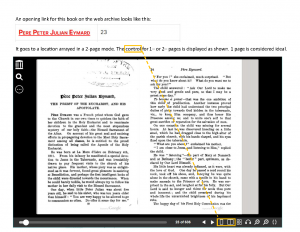Numerous Devotional Resources from Traditional Texts
Video of `Searching for Classic Prayers Online` (Click/Expand or Bypass)
Click ^ again to contract


for Viewing Pages at
the Internet Archive
Numerous Devotional Resources from Traditional Texts
Click ^ again to contract

